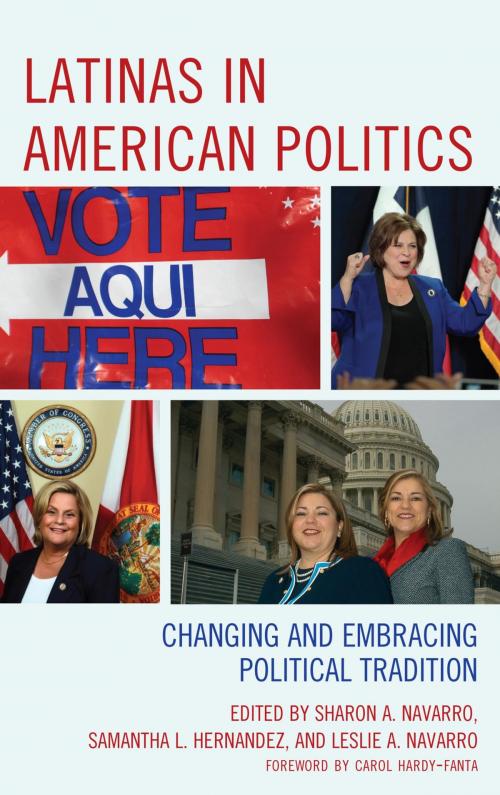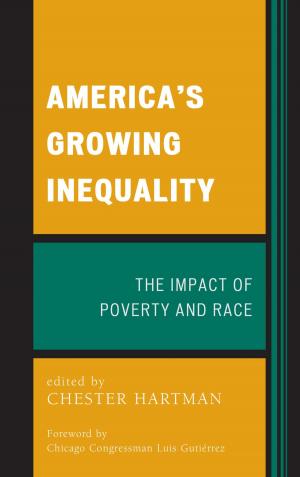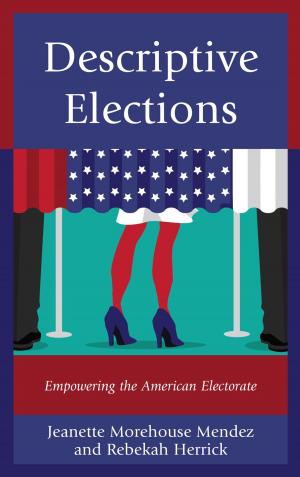Latinas in American Politics
Changing and Embracing Political Tradition
Nonfiction, Social & Cultural Studies, Political Science, Government, Elections, Social Science, Cultural Studies, Ethnic Studies| Author: | Tony Affigne, Ivy A. M. Cargile, John Garcia, Sarah Allen Gershon, Lizeth Gonzalez, Julia Marin Hellwege, Samantha L. Hernandez, Patricia D. Lopez, Jose Marichal, Jennifer L. Merolla, Jessica Lavariega Monforti, Leslie A. Navarro, Sharon A. Navarro, Jean Reith Schroedel, Christine Marie Sierra, Juan Urbano, Walter Clark Wilson | ISBN: | 9781498533362 |
| Publisher: | Lexington Books | Publication: | May 12, 2016 |
| Imprint: | Lexington Books | Language: | English |
| Author: | Tony Affigne, Ivy A. M. Cargile, John Garcia, Sarah Allen Gershon, Lizeth Gonzalez, Julia Marin Hellwege, Samantha L. Hernandez, Patricia D. Lopez, Jose Marichal, Jennifer L. Merolla, Jessica Lavariega Monforti, Leslie A. Navarro, Sharon A. Navarro, Jean Reith Schroedel, Christine Marie Sierra, Juan Urbano, Walter Clark Wilson |
| ISBN: | 9781498533362 |
| Publisher: | Lexington Books |
| Publication: | May 12, 2016 |
| Imprint: | Lexington Books |
| Language: | English |
The challenges that women face as political candidates can be compounded by race. In the case of Latinas, stereotypes as well as national media coverage and labeling of “Latino” issues potentially creates an electoral burden for Latina candidates at the local, state, and national level. The intersection of race and gender is complicated and often creates more questions than it answers. How are Latinas elected? Are they served by this complex identity or hindered by it? Latinas in American Politics: Embracing and Changing Political Tradition begins addressing the issues by examining the stereotypes Latinas face while running for political office. More specifically, the perception of voters on ideological standings of Latinas provides insight as to what party Latinas are identified with and how they can use this to their advantage. In addition to establishing the role stereotypes play in the electability of Latinas, the way they use and diffuse these stereotypes via campaigns is examined. The images that Latinas present and how they interact with voters via social media establishes a new dynamic in campaigning and allows for theory building in the area of race, gender, and campaigns. Aside from campaigning, party identification for a Latina creates a different barrier. How do Latinas bridge this? Case studies of prominent Latina officials are examined to understand within which contexts and under what conditions Latinas as candidates and as elected officials will experience intersectionality as advantage and disadvantage. Finally, the examination of Latina congressional members shows whether and how the intersection of gender and ethnicity in descriptive representation contributes uniquely to patterns of substantive representation. Ultimately, this volume demonstrates how the intersection of race and gender creates unique situations for representation and electability of candidates.
The challenges that women face as political candidates can be compounded by race. In the case of Latinas, stereotypes as well as national media coverage and labeling of “Latino” issues potentially creates an electoral burden for Latina candidates at the local, state, and national level. The intersection of race and gender is complicated and often creates more questions than it answers. How are Latinas elected? Are they served by this complex identity or hindered by it? Latinas in American Politics: Embracing and Changing Political Tradition begins addressing the issues by examining the stereotypes Latinas face while running for political office. More specifically, the perception of voters on ideological standings of Latinas provides insight as to what party Latinas are identified with and how they can use this to their advantage. In addition to establishing the role stereotypes play in the electability of Latinas, the way they use and diffuse these stereotypes via campaigns is examined. The images that Latinas present and how they interact with voters via social media establishes a new dynamic in campaigning and allows for theory building in the area of race, gender, and campaigns. Aside from campaigning, party identification for a Latina creates a different barrier. How do Latinas bridge this? Case studies of prominent Latina officials are examined to understand within which contexts and under what conditions Latinas as candidates and as elected officials will experience intersectionality as advantage and disadvantage. Finally, the examination of Latina congressional members shows whether and how the intersection of gender and ethnicity in descriptive representation contributes uniquely to patterns of substantive representation. Ultimately, this volume demonstrates how the intersection of race and gender creates unique situations for representation and electability of candidates.















